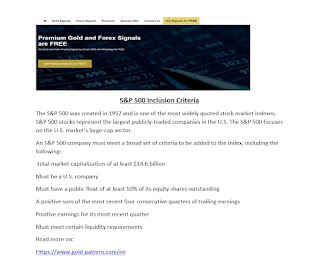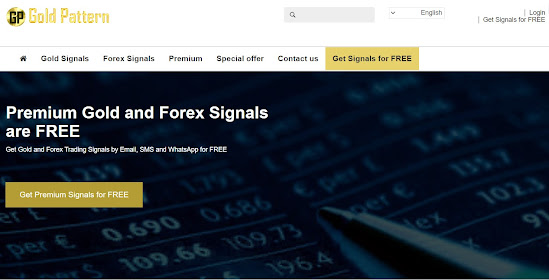S&P 500 Inclusion Criteria
S&P 500
Inclusion Criteria
The S&P
500 was created in 1957 and is one of the most widely quoted stock market
indexes. S&P 500 stocks represent the largest publicly-traded companies in
the U.S. The S&P 500 focuses on the U.S. market's large-cap sector.
An S&P
500 company must meet a broad set of criteria to be added to the index,
including the following:
A total
market capitalization of at least $14.6 billion
Must be a
U.S. company
Must have a
public float of at least 10% of its equity shares outstanding
A positive
sum of the most recent four consecutive quarters of trailing earnings
Positive
earnings for its most recent quarter
Must meet
certain liquidity requirements
1
Companies
may be removed from the S&P 500 if they deviate substantially from these
standards.
2
$40.3
trillion
The total
combined market cap of the 500 companies in the S&P 500 as of March 31,
2022.
3
S&P 500
Calculation
The S&P
500 is a free-float market capitalization-weighted index. Market capitalization
(or market cap) represents the total dollar market value of a company's
outstanding equity shares. Market cap is calculated by multiplying the total
number of outstanding shares of stock by the company's current stock price.
4
For example, a company with 20 million shares
outstanding in which its stock is selling for $100 per share would have a
market cap of $2 billion.
As a result,
the more valuable an individual company's stock becomes, the more it
contributes to the S&P 500's overall return. It is not uncommon for
three-quarters of the index's return to be linked to only 50 to 75 stocks.
Therefore,
the addition or subtraction of smaller companies from the index will not have a
noticeable impact on the overall return of the index. However, the removal or
addition of even just one of the largest stocks can have a major impact.
S&P 500
Sector Breakdown
Below are
the top sectors and their weightings within the S&P 500 index as of March
31, 2022.
5
S&P 500
Sector Weighting
Sector Index
Weighting
Information
Technology 28.0%
Health Care 13.6%
Consumer
Discretionary 12.0%
Financials 11.1%
Communication
Services 9.4%
Industrials 7.9%
Consumer
Staples 6.1%
Energy 3.9%
Utilities 2.7%
Real Estate 2.7%
Materials 2.6%
Source:
S&P Dow Jones Indices
Being aware
of the S&P's sector weighting is important because sectors with a smaller
weighting may not have a material impact on the value of the overall index—even
if they're outperforming or underperforming the market.
For example,
if oil prices are rising, leading to increased profits for the energy sector,
those stocks represent only 3.9% of the S&P 500. As a result, oil stocks
may not lead to a higher S&P if, for example, the more heavily weighted
information technology sector is underperforming.
S&P 500 components are weighted by
free-float market capitalization, which means that larger companies can affect
the value of the index to a greater degree.
6
Top 25
Components by Market Cap
Because the
exact weightings of the top 25 components are not available from S&P
directly, the weightings below are from the SPDR S&P 500 Trust ETF (SPY).
SPY is the oldest exchange traded fund (ETF) that tracks the S&P 500 and
holds over $419 million in assets under management (AUM) and is highly traded.
7
As a result,
the SPY's portfolio weightings provide a good proxy for investing in the
underlying S&P 500 index, although the two may not be exactly the same. As
of April 1, 2022, the following are the 25 largest S&P 500 index
constituents by weight:
8
Apple
(AAPL): 7.14%
Microsoft
(MSFT): 6.1%
Amazon
(AMZN): 3.8%
Tesla
(TSLA): 2.5%
Alphabet
Class A (GOOGL): 2.2%
Alphabet
Class C (GOOG): 2.1%
NVIDIA
Corporation (NVDA): 1.8%
Berkshire
Hathaway Class B (BRK.B): 1.7%
Meta (META),
formerly Facebook, Class A: 1.4%
UnitedHealth
Group (UNH): 1.2%
Johnson
& Johnson (JNJ): 1.2%
JPMorgan
Chase (JPM): 1.0%
Visa Class A
(V): 1.0%
Procter
& Gamble (PG): 1.0%
Exxon Mobil
(XOM): 0.90%
Home Depot
(HD): 0.8%
Chevron Corporation
(CVX): 0.80%
Mastercard
Inc. Class A (MA): 0.8%
Bank of
America (BAC): 0.8%
AbbVie Inc.
(ABBV): 0.7%
Pfizer
(PFE): 0.7%
Broadcom
Inc. (AVGO): 0.7%
Costco
(COST): 0.7%
Walt Disney
(DIS): 0.7%
Coca-Cola
Company (KO): 0.6%
How Many
Companies Are in the S&P 500?
There are
500 companies within the S&P 500 index. However, there are 505 stocks since
some companies have multiple classes of equity shares, such as Alphabet and
Berkshire Hathaway.
9
What Are the
Top 10 Holdings in the S&P 500?
As of April
1, 2022, the top ten holdings and their weighting in the index are:
Apple
(AAPL): 7.14%
Microsoft
(MSFT): 6.1%
Amazon
(AMZN): 3.8%
Tesla
(TSLA): 2.5%
Alphabet
Class A (GOOGL): 2.2%
Alphabet
Class C (GOOG): 2.1%
NVIDIA
Corporation (NVDA): 1.8%
Berkshire
Hathaway Class B (BRK.B): 1.6%
Meta (META),
formerly Facebook, Class A: 1.4%
UnitedHealth
Group (UNH): 1.2%
How Are
Companies Selected for the S&P 500?



Comments
Post a Comment